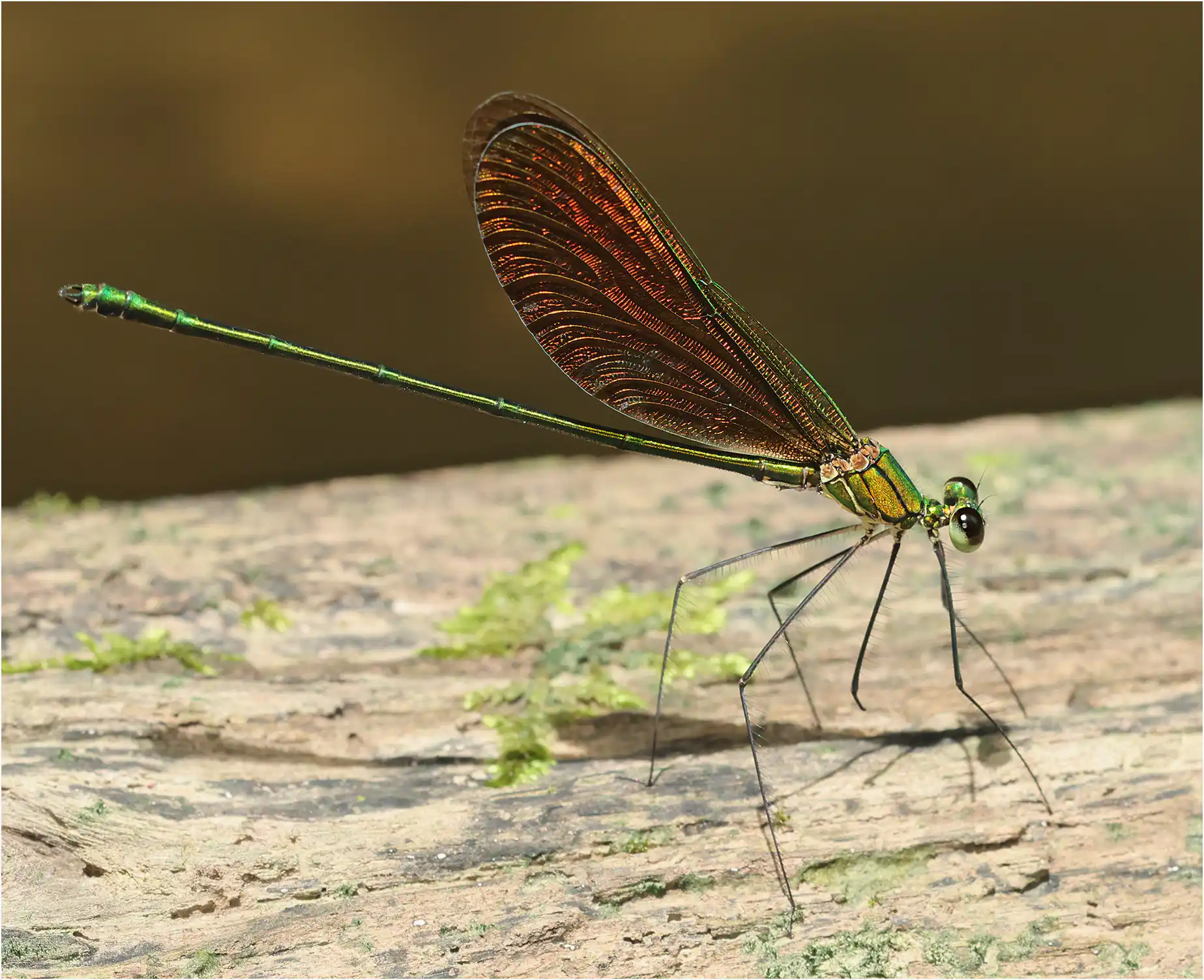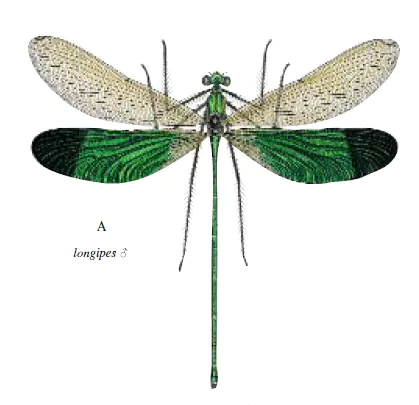
Male Neurobasis longipes is one of the thirteen species of this genus currently recognized (Selys, 1853)(1). I had until then only encountered Neurobasis chinensis, which is much more common throughout Asia. For the most part, the other 12 species are restricted to the Philippines and New Guinea, Borneo and Sumatra.
There is no risk of confusion in Borneo since only N. longipes and chinensis are present. Elsewhere, only in New Guinea, where several species are sympatric, has a key been produced by Orr & Hämäläinen (2), who have devoted a book to the Metalwings of the Eastern Tropics.
All Neurobasis have hyaline (or nearly so) forewings, and colored hindwings: Male Neurobasis longipse and male N. chinensis show a similar coloration; the wing on its inner side is metallic green, shimmering and iridescent, however reserving a large apical part to a much darker shade, while on their outer side, they are ochre / orange, metallic and also shimmering. The essential and immediately visible difference is the length of the legs of N. longipes. In the opinion of specialists of the genre, it is the most beautiful of all!
I unfortunately did not have the opportunity to photograph the inner side of its wings, because they have proven extremely difficult to approach once landed, while we observed them at length fighting in a spectacular way around the rare rocks which emerged from the eddies in the Timuoh River, a wide and fairly fast river, entirely in the biotope which they like. Here is an illustration from Albert G. Orr and Matti Hämäläinen (3), to be compared with the photo in link :

Its abdomen measures 44 to 51 mm (3) which gives it a total length of about 57 mm.
Its distribution is limited exclusively to Borneo and Peninsular Malaysia, however it is not known from Singapore.
IUCN Red List

Etymology
Neuro, from the Greek neuron for « tendon, nerve « . In entomology, this term means « vein ». Basis, from … basis which means « base, basal ». Neurobasis was in fact created to highlight a particular arrangement of the venation of this genus, the presence of transverse veins in the basal space, while the genera Calopteryx or Vestalis do not have them.
Longipes (4), from the Latin longus , for long and pes for foot, to highlight the unusual length of the legs of this species. Hagen writes: « This variety would not be distinguished, but its feet are noticeably longer and thinner: the hind tibiae are 14 mm long… ».
1- Selys-Longchamps, Michel-Edmond. (1853). Synopsis des Calopterigynes . Bulletins de l’Académie Royale Des Sciences, Des Lettres et Des Beaux-Arts de Belgique, 20 (Annexe), 1–73. P. 18.
2- Hagen, HA, 1887 – About Neurobasis and Vestalis. Abhandlungen der Zoologisch-Botanischen Gesellschaft in Wien 37: 647–648
3- Albert G. Orr and Matti Hämäläinen, 2007 – The Metalwing Demoiselles of the Eastern Tropics and their biology – Natural History Publications (Borneo)
4- Matti Hämäläinen & Heinrich Fliedner, 2022 – Etymology of the scientific names of the extant damselfly damselflies (Odonata: Calopterygidae) – Journal of the International Dragonfly Fund